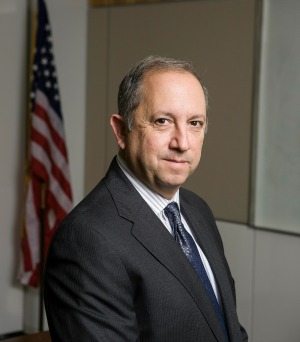
Just a few months into its acquisition of the Springfield, Virginia-based firm Information Innovators Inc., Salient CRGT is going strong. In early March, both companies officially combined their expertise in health services and data analytics, respectively, to bring greater solutions to the federal marketplace. The acquisition is very timely with health reform legislation moving through Congress.
“Salient CRGT’s biggest growth area has been in the data analytics and business intelligence groups; Triple-i’s biggest growth has been in health services,” said Tom Ferrando, president of the Fairfax, Virginia-based government IT services firm. “Looking forward, we see a lot of opportunity in and around ‘health data analytics’ to help health care agencies with the problems they are trying to solve in support of their constituents.”
In the United States alone, the health care analytics industry is expected to grow to more than $18.7 billion by 2020. Among federal customers, the push toward health care IT remains equally strong. The Defense Department is in the process of implementing a new electronic health records system, while the Veterans Affairs Department remains focused on developing a comprehensive digital health platform.
In the case of Salient CRGT, the company’s portfolio now spans the departments of Health and Human Services, Veterans Affairs, Homeland Security and the Defense Health Agency. With the Triple-i acquisition, the company has also added such critical contracts as VA T4NG, CMS SPARC, GSA PSS and USAMRAA TEAMS, among others.
“Our data analytics has been our fastest-growing segment over the last three to four years,” Ferrando said. “Really, it’s across the board—we’ve seen it in federal civilian agencies, defense, intel, and we are seeing it more now in health care.”
Mid-tier companies like Salient CRGT, which boosted its annual revenue to $500+ million with the Triple-i acquisition, have carved out a niche responding to this growing marketplace.
“We are responsive, we are agile, and the large contractors that we see, and are competing with, just can’t move as quickly as we can,” Ferrando said. “The history of our company, and the evolution of our technology, is reflective of our ability to state that.”
Before the Triple-i acquisition, Salient CRGT had already undergone several bold moves. This past summer, the company moved into a new office space that spans 33,370 square feet—all home to two agile labs, focused on delivering solid, deployable software using agile development practices; and a Innovation Center Technology Lab, where agile development products and a suite of modern open source tools are put to the test.
The space also provides a demonstration facility for Salient CRGT’s product solutions, spanning IPv6 network protection, mobile data integration and mobile asset management.
“We bring our teams together, usually on Friday mornings, and rotate which projects we want to review,” Ferrando said. “We ask the people on the ground, ‘What are the problems that our customers are facing and that you’re hearing about?’”
That brainstorm leads the firm’s technologists to pose potential solutions. So far, Salient CRGT has completed more than 300 government-specific data analytics and business intelligence projects of all shapes and sizes.
“We prototype solutions, implement tools, take publicly available data and run it through some models, and then go back to our customers and show them the innovation prototypes—many times, they are floored,” Ferrando said. “They are amazed that we have done that kind of work in preparation for a discussion with them, but that’s how we’ve always operated—listen to your customer, find the pain points and lead with innovation, not just respond to proposals.”
That ethos underpins another bold move: In September 2015, Salient Federal Solutions and CRGT, then operating as two separate companies, joined capabilities in information technology, engineering services and full life‐cycle IT services, to become Salient CRGT. Prior to the merger, Ferrando served as president and CEO of CRGT, while industry colleague Brad Antle served as CEO of Salient Federal Solutions.
“CRGT started with three people around a kitchen table in New Jersey, and here I am on a train talking to you heading back to New Jersey,” said Ferrando, speaking on a recent evening while in transit back to his home state for the weekend. His voice sounded upbeat and youthful. “I’ve been commuting back and forth [to Northern Virginia]for nearly 17 years, so maybe that keeps me young,” he responded.
That long track record has also afforded Ferrando the long view, on staying relevant to federal customers, especially.
“Every time you do a significant acquisition, you really need to be introspective, take a look at your structure and make sure it still works,” Ferrando said. “I started running CRGT 20 years ago, and what worked when we were a $10 million company didn’t work when we were a $50 million company, or a $100 million company—you constantly have to adjust.”
Today, the company spans more than 20 offices, with more than 2,000 personnel in over 150 locations across the United States and overseas. As always, that movement of activity and innovation will likely spell ongoing need for change.
So what remains fixed and unchanging?
“It has to be the culture—a lot of times, a technology company will try the ‘build it and they will come’ approach, and a lot of those companies aren’t in business anymore,” Ferrando said. “I’ve always said to my team, ‘If you can sit and listen to your customer, and find out what causes them pain—and bring a solution that makes that pain go away—then we will be successful.’”
That mission keeps Ferrando grounded.
“Our customers should expect tremendous responsiveness, tremendous agility—we are going to be thinking about new innovations, rolling out new service offerings,” Ferrando said. “Quite frankly, I don’t know of any other company like us in the marketplace of our size and capabilities—I couldn’t be more excited.”

